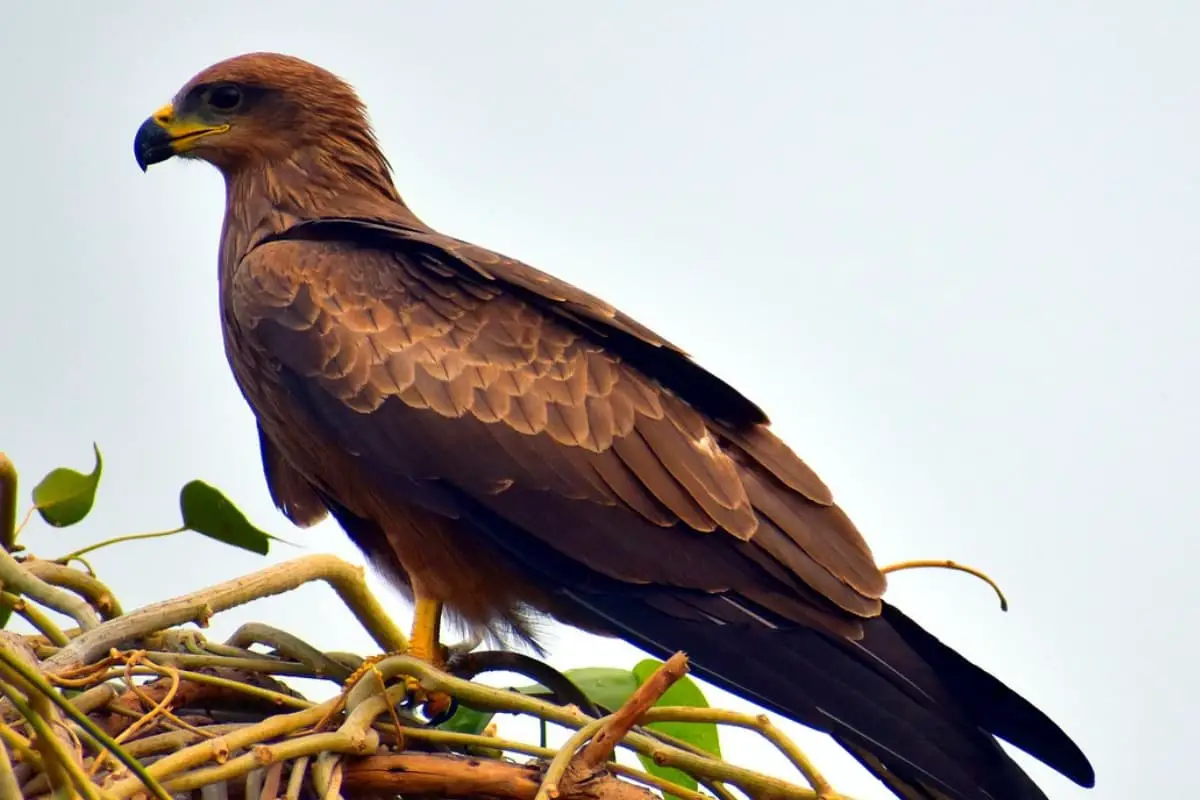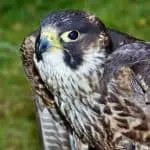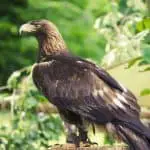Common Name: Black Kite
Scientific Name: Milvus migrans| Size | Diet | Range in Hawaii | Status in Hawaii |
|---|---|---|---|
| 18 in. - 20 in. | small mammals, birds, reptiles, amphibians | unknown | Least Concern |
The Black Kite (Milvus migrans) is a bird of prey that has long been admired for its grace and agility. With its striking black plumage and distinctive forked tail, this kite is a common sight in many parts of the world. However, it is not native to Hawaii, making sightings of this bird on the islands a rare and exciting event for birdwatchers. In this article, we’ll explore the fascinating world of the Black Kite and learn more about its unexpected presence in Hawaii.
Black Kite
Appearance
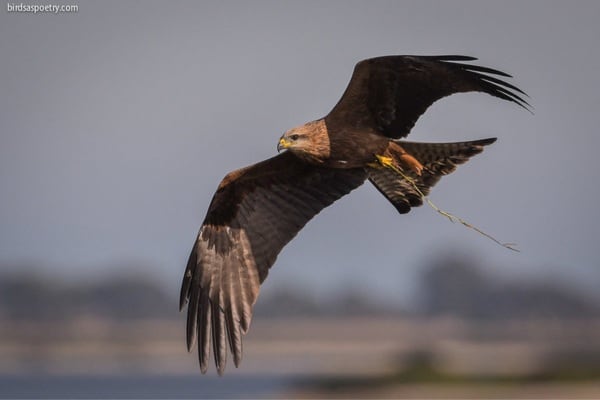
The Black Kite is a medium-sized raptor with distinct features. It has a sleek and elegant appearance with a wingspan ranging from 51 to 57 inches (130 to 145 cm) and a body length of around 18 to 20 inches (45 to 50 cm). The plumage of adult Black Kites is predominantly dark brown to black, with a lighter-colored head and neck.
The tail is forked and shows a contrasting white base. In flight, their long, narrow wings with finger-like wingtips are characteristic, allowing them to soar and glide effortlessly through the air. Juvenile Black Kites have a more mottled and lighter-colored plumage, gradually darkening as they mature.
Diet
The Black Kite is an opportunistic and versatile predator with a diverse diet. Its diet primarily consists of small to medium-sized animals. One of the key food sources for Black Kites is carrion, including dead animals and discarded scraps.
They are skilled scavengers, often taking advantage of roadkill or carcasses left by other predators. Additionally, Black Kites are adept hunters and will actively pursue live prey.
They feed on a variety of animals, such as small mammals, birds, reptiles, amphibians, and even insects. They have been observed hunting for fish near water bodies and are also known to steal food from other birds in flight.
Nesting
The Black Kite constructs its nest in tall trees or occasionally on man-made structures such as utility poles or buildings. The nest is typically large and bulky, made up of twigs, sticks, and branches.
The female Black Kite is primarily responsible for nest building, while the male assists by providing materials. They may reuse and refurbish their nests in subsequent breeding seasons.
Black Kites are monogamous and form long-term pair bonds. The breeding season varies depending on the geographical location. They engage in elaborate courtship displays, which include aerial acrobatics and calling to attract a mate. Once the pair bond is established, they begin preparing the nest for breeding.
The female lays a clutch of two to four eggs, which are incubated by both parents for approximately one month. The parents take turns incubating the eggs and sharing the responsibilities of nest maintenance and defense.
After hatching, the chicks are initially covered in white down feathers. Both parents participate in feeding the chicks by bringing food to the nest. The young grow rapidly and eventually fledge, or leave the nest, after about six to seven weeks.
Black Kites are known to exhibit cooperative breeding behavior, where additional adults from the same family group or previous broods assist in raising the chicks. This cooperative breeding system enhances the survival and success of the offspring.
Behavior
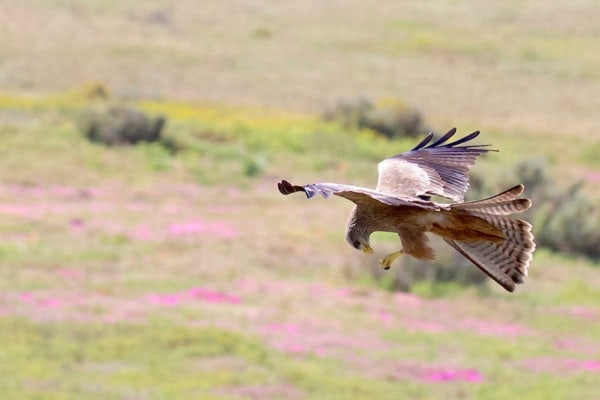
The Black Kite exhibits fascinating behaviors that showcase its adaptability and aerial prowess. These birds are highly skilled and agile fliers, often seen soaring and gliding effortlessly in search of food or thermals. Their flight is characterized by graceful wing movements and a distinctive forked tail.
Black Kites exhibit a versatile feeding behavior as opportunistic predators. They are adept scavengers, often feeding on carrion and making use of roadkill or leftover animal remains.
Furthermore, they actively engage in hunting, targeting a range of live prey such as small mammals, birds, reptiles, amphibians, and even insects. Their agility in mid-air allows them to perform impressive aerial maneuvers to capture prey or pilfer food from other birds while in flight.
During the breeding season, Black Kites engage in elaborate courtship displays. These displays involve aerial acrobatics, with the birds soaring high in the sky, calling, and engaging in synchronized flight patterns. These behaviors are essential for pair bonding and mate selection.
Black Kites are social birds, often seen in loose groups or aggregations, especially at communal roosting sites. These roosting sites provide safety and social interaction opportunities. They may also engage in mobbing behavior, where multiple individuals harass and drive away potential threats, such as larger raptors or intruders near their nests.
Their communication repertoire includes various vocalizations. Black Kites emit a range of calls, including high-pitched whistles, mewing sounds, and harsher cries, which are used for communication within their social groups, during territorial displays, or to defend their nests.
Habitat
The Black Kite is a highly adaptable bird that can be found in a wide range of habitats across its distribution. It is a migratory species, with populations residing in Europe, Asia, Africa, and parts of Australia.
Black Kites are commonly associated with open habitats, such as grasslands, savannas, and agricultural areas. They are often seen soaring above these landscapes, searching for prey or carrion. In these open habitats, they have a clear view of the ground and can easily spot potential food sources.
They are also found near water bodies, including rivers, lakes, and wetlands, where they can take advantage of fish as part of their diet. The proximity to water sources provides them with opportunities to hunt and scavenge aquatic prey.
Urban and suburban areas are not uncommon habitats for Black Kites. They have adapted well to human-altered landscapes and can be seen soaring over cities, towns, and farmlands. These areas provide them with additional food sources, such as garbage dumps or discarded food.
Black Kites typically prefer habitats with scattered trees or woodlands, as these provide suitable nesting sites and perches for roosting. Tall trees or man-made structures, such as utility poles or buildings, are chosen for nesting purposes.
Range
The Black Kite is a migratory species that is not native to Hawaii. However, it has been recorded as a vagrant in the Hawaiian Islands. Vagrancy refers to individuals of a species that are outside their typical range and have strayed far from their usual migration routes.
In Hawaii, Black Kites have been observed as vagrants in various locations, including w. Micronesia, Wake Atoll, and Midway in the Northwestern Hawaiian Islands. These sightings indicate that individual Black Kites have made rare and unusual visits to the Hawaiian Islands as part of their migratory journeys.
Conservation Status
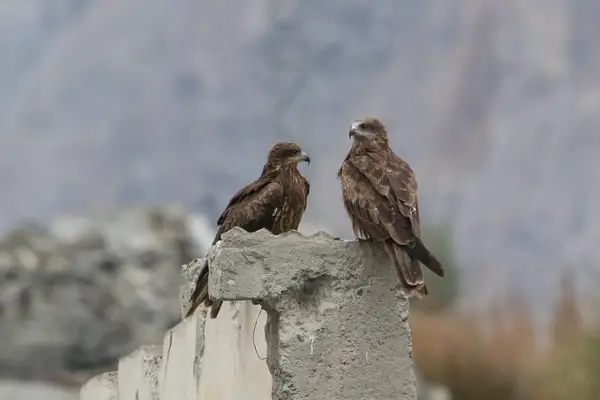
The conservation status of the Black Kite varies depending on the region and population. Overall, the species is considered to be of “Least Concern” according to the International Union for Conservation of Nature (IUCN) Red List. This categorization implies that the global population of Black Kites is large and stable, with no immediate threats to their survival.
However, it’s important to note that specific populations or sub-species of Black Kites may face different conservation concerns in certain regions. For example, in some parts of Europe, habitat loss, degradation, and changes in land use practices have had negative impacts on Black Kite populations. Intensive agriculture, deforestation, and the conversion of wetlands are among the factors contributing to habitat loss.
Interesting Facts
1. Aerial acrobats
These birds are known for their impressive aerial displays and acrobatic flight. They can soar, glide, and perform agile maneuvers in the air, showcasing their agility and grace.
2. Sociable birds
They are social birds and can be seen roosting and nesting in loose groups. They also engage in communal roosting sites, where they gather with other individuals for safety and social interaction.
3. Intelligent hunter
Black Kites exhibit intelligent hunting behavior. They are known to take advantage of wildfires, using the smoke to dislodge insects and small animals, making them easier to catch.
4. Vocal communication
Black Kites communicate through a range of vocalizations, including calls, screams, and whistles. These vocalizations serve various purposes, such as territorial defense, courtship displays, and maintaining social bonds.
5. Winter migrations
Many populations of Black Kites are migratory, undertaking long-distance journeys during the winter season to seek favorable feeding grounds. They often form large flocks during migration, creating an impressive sight in the sky.
Frequently Asked Questions
1. Do Black Kites form social groups?
Black Kites are generally solitary birds, but they can congregate in large flocks during migration or when feeding on abundant food sources.
2. How long do Black Kites live?
Black Kites have an average lifespan of around 15 to 20 years in the wild. However, some individuals have been known to live up to 25 years or more.
3. Can Black Kites be kept as pets?
It is not advisable to keep Black Kites as pets. They are wild birds that require specific care, diet, and natural habitat to thrive. It is illegal in many jurisdictions to possess or capture wild birds without proper permits.
4. Are Black Kites noisy birds?
Black Kites are relatively vocal birds, especially during their breeding season and when defending their territory. They produce a range of calls, including high-pitched whistles, mews, and harsh screams.
